For additional information relating to this article, please contact:
August 30, 2021BUSINESS OPENING AND CLOSING, MAY 2021 Statistics Canada released updated data on monthly business openings and closures for May 2021.
A business will be classified as open if it had no employment in the previous month and then has employment in the next month and a business will be closed if it had employment in the previous month and no employment in the current month. For opening and closing, the reason could be a permanent change (i.e. business exit) or temporary for reasons such as seasonal operations, capital maintenance, restructuring or the COVID-19 situation. Continuing business are those that had employment in both the current and previous month. Active businesses are the sum of continuing and opening business in the current month.
New restrictions were imposed in Nova Scotia at the end of April to contain an outbreak of COVID-19, leading to a substantial reduction in the number of active businesses. These were the largest reductions in the number of active businesses since the first wave of the pandemic in the spring of 2020.
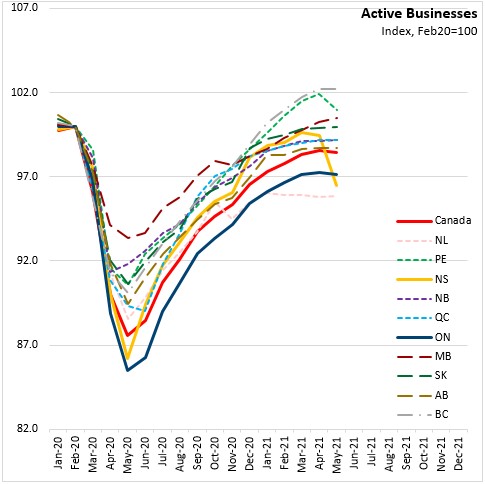
The number of active businesses in Nova Scotia fell 3.0% from April to May 2021. Nationally, active businesses decreased 0.1%. The number of active businesses decreased the most in Nova Scotia and Prince Edward Island. Manitoba reported the largest increase in the number of active businesses.
The monthly decline in Nova Scotia's active businesses was concentrated among accommodation/food, construction, retail, arts/recreation, personal/repair and health care/social assistance (which includes daycares).

Compared with February 2020, the number of active businesses was down 3.6% for Nova Scotia in May 2021, falling to a level last seen in November 2020. Nationally, active businesses are lower by 1.6% from February 2020 to May 2021. The number of active businesses was down in seven provinces compared to February 2020, with the exception of British Columbia, Prince Edward Island and Manitoba. The largest declines were experienced in Newfoundland and Labrador, Nova Scotia and Ontario.
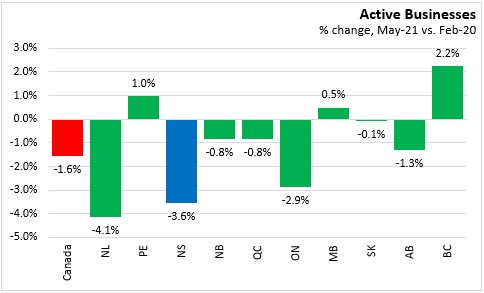
The number of active businesses in Halifax was up 1.9% from February 2020 to May 2021. This suggests that the decline in active businesses across Nova Scotia was concentrated outside the city. Among cities (Census Metropolitan Areas), the declines in active businesses from February 2020 to May 2021 were most severe in St. John's, Thunder Bay, Windsor, Toronto and St. Catharines - Niagara. The two cities with the largest rises in the number of active businesses were Abbotsford-Mission and Regina.
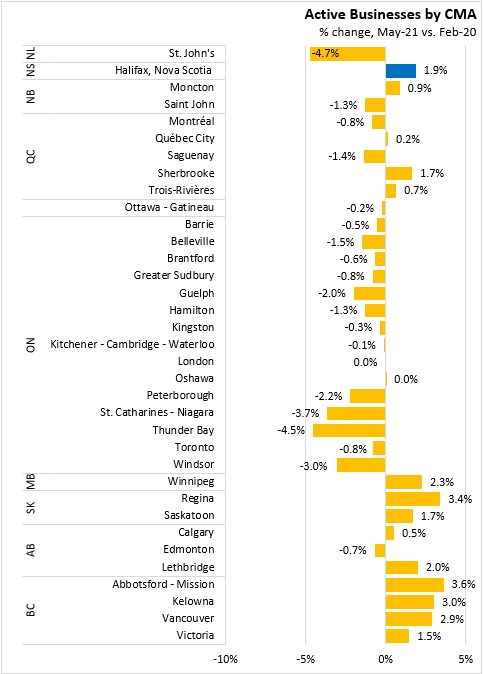
The calculation for the opening, continuing and closure rate have been made based on the number of active business in the previous month. The rate at which business either opened, continued or closed can be examined to see how number of active business has changed.
Most businesses continue operating each month. At the height of COVID-19 related restrictions, the share of businesses that continued to operate from one month to the next fell to 88.9% in Nova Scotia, down from 95.5.% in February 2020. National continuing rates fell from 95.7% in February to 89.0% in April 2020.
Business continuing rates rose sharply across all provinces through the summer of 2020. Since then, Nova Scotia's business continuing rates have stabilized around pre-pandemic levels, including 95.3% in May 2021. National business continuing rates have declined since the beginning of 2021 and stood at 95.1% in May 2021.
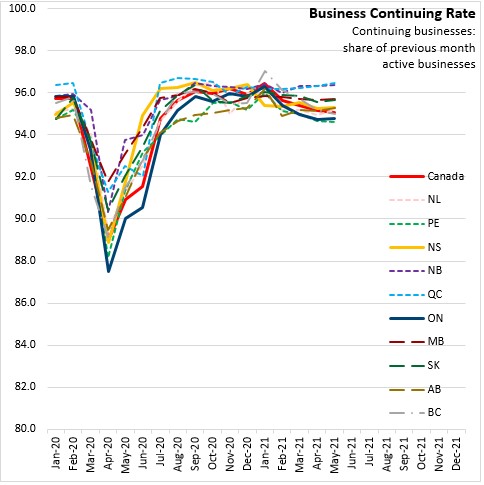
Nova Scotia’s business opening rate declined slightly from 3.9% in February 2020 to 3.6% in April 2020. By June, the Nova Scotia business opening rate increased to 8.2% as the economy re-opened and restrictions were lifted. Since last summer, Nova Scotia's business opening rate declined back to be closer to pre-pandemic levels, falling to 4.2% in April 2021. As new restrictions were implemented in May 2021, the Nova Scotia business opening rate fell to 3.4% - its lowest since the start of the pandemic. Nationally, the opening rate actually increased in March and April of 2020, and then accelerated in June. Since then, the national business opening rate declined, falling to 4.4% as of May 2021.
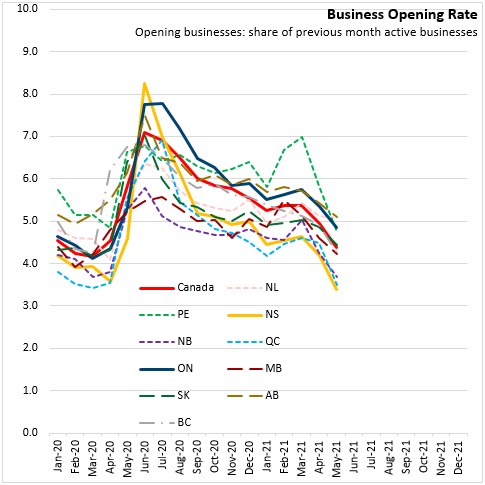
The rate of business closures in Nova Scotia was 3.7% in February 2020. This increased to 12.3% in April 2020 and has subsequently fallen back to pre-pandemic levels. The business closing rate in Nova Scotia was 4.0% in April 2021 and 4.8% in May 2021. Nationally, the business closing rate increased from 4.4% in February 2020 to 12.6% in April of that year. In May 2021, the national business closing rate was 4.5%.
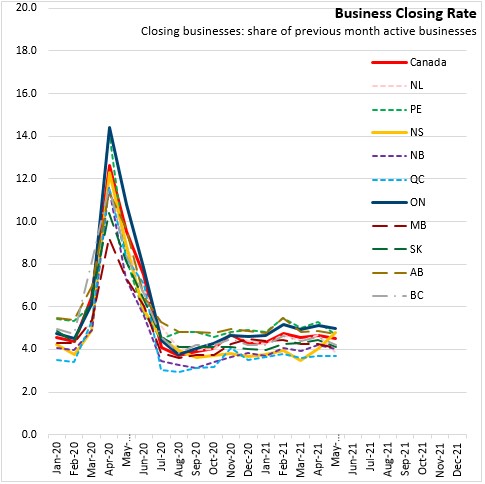
The COVID-19 situation has impacted business sector industries to different degrees. The number of active business in Nova Scotia remained lower in many industries for May 2021 when compared to February 2020. Nova Scotia's largest declines in percentage terms were observed in mining/oil/gas (-10.0%), though this represents only a small number of businesses. With the imposition of new restrictions in May 2021, the number of active businesses declined in accommodation/food (-6.4%) and arts/entertainment/recreation (-4.1%).
Nationally, the number of active businesses was down for most industries, with a notably steeper decline in arts/entertainment/recreation, accommodation/food services, and personal/repair services.
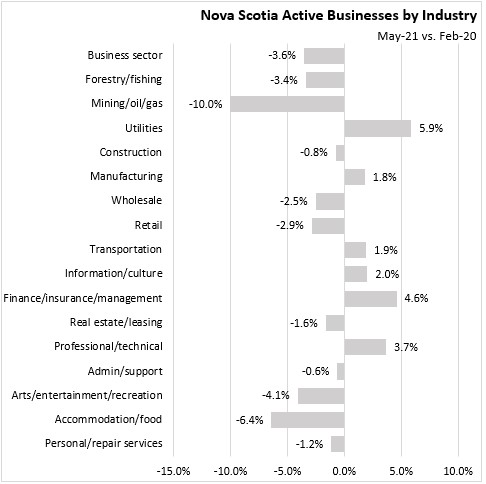
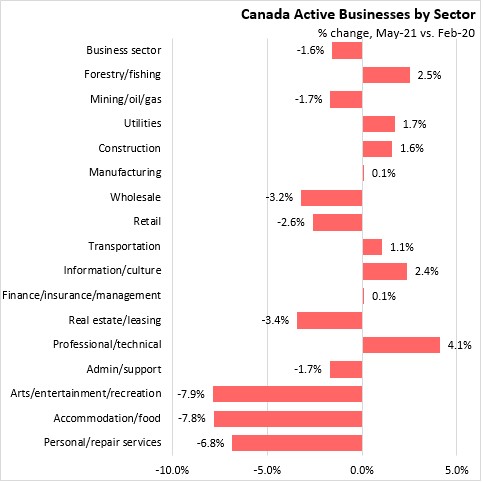
Statistics Canada has broken out specific data for tourism-related industries. This shows that the number of active tourism-related businesses was down 6.8% in Nova Scotia from February 2020 to May 2021. Transportation and travel services have reported the largest declines among Nova Scotia tourism businesses. Nationally the decline was 8.2%. Nova Scotia's declines in active tourism businesses have been smaller than the national average for all tourism related industries.
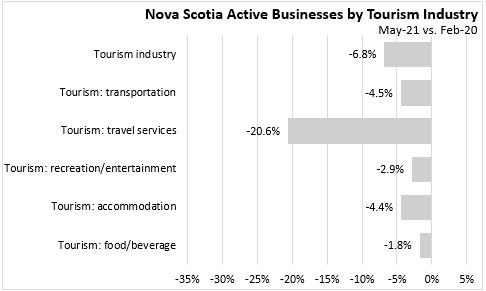
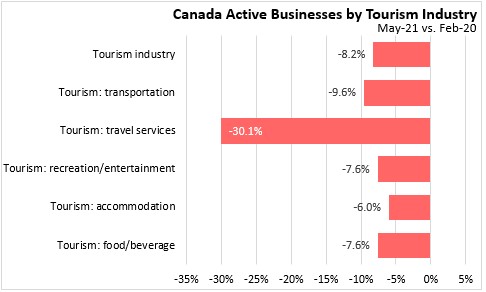
Construction, retail, arts/entertainment/recreation and accommodation/food reported the largest changes in the number of businesses from April 2021 to May 2021.

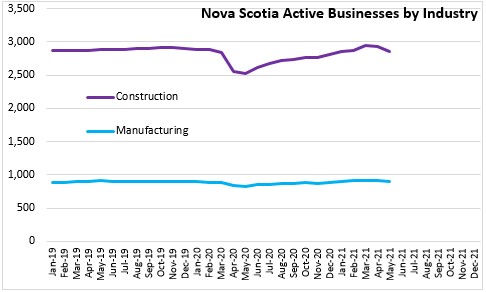
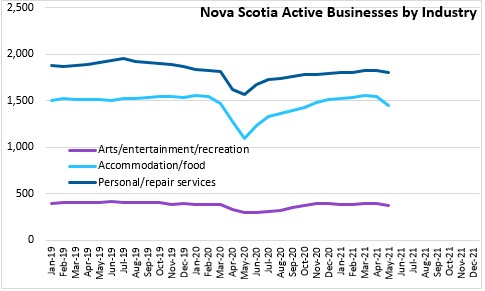
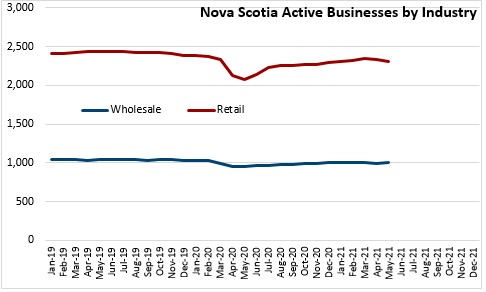
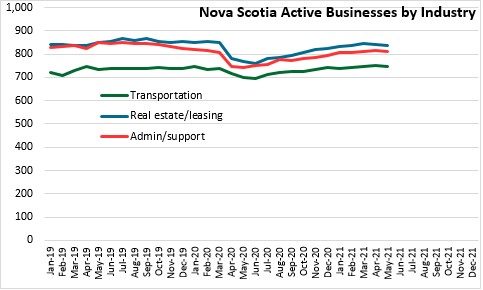
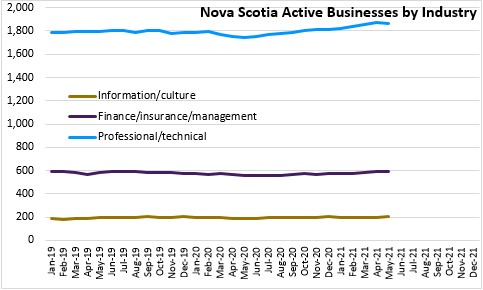
The source data is seasonally adjusted. The data may not aggregate due to firms being classified into multiple industry or geography.
Source: Statistics Canada. Table 33-10-0270-01 Experimental estimates for business openings and closures for Canada, provinces and territories, census metropolitan areas; Methodology: Business Opening and Closing